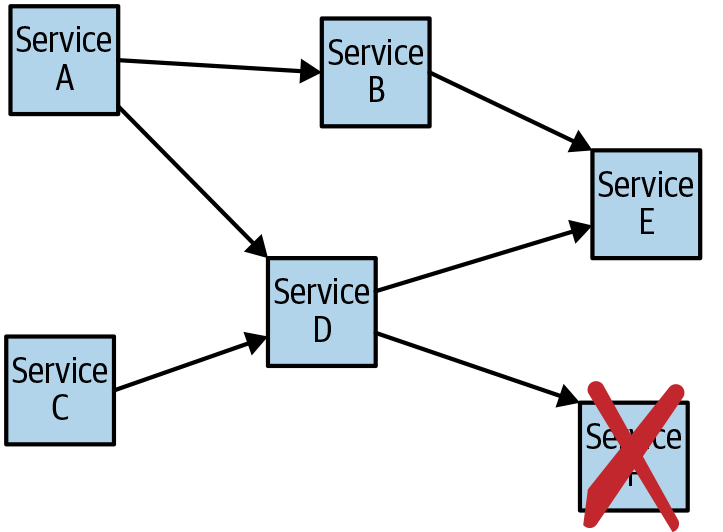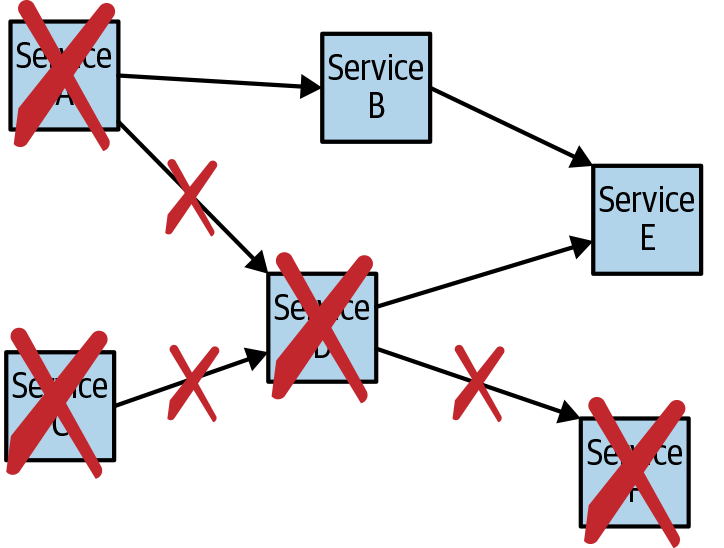Chapter 7. Service Tiers
Working with large, complex applications with many services can cause availability issues. A failure of a single service can cause services that depend on it to fail. This can cause a cascade effect that results in your entire application failing. This is especially egregious when the service that failed is not itself a mission-critical service but it causes mission-critical services to fail.
Service tiers are labels associated with a service that indicate the criticalness of that service to the operation of your business. Service tiers allow you to manage your application complexity and understand the importance of individual application services in a distributed and organized manner.
Application Complexity
As illustrated in Figure 7-1, sometimes the smallest and least significant of services can fail.

Figure 7-1. A single service failure...
This can cause your entire application to go down, as illustrated in Figure 7-2.

Figure 7-2. ...can cause a cascade failure
There are many ways to prevent dependent services from failing, and we discuss many of these in Chapter 5. However, adding resiliency between services also adds complexity and cost, and sometimes it is not needed. Looking at Figure 7-3, what happens if Service D is not critical to the running ...
Get Architecting for Scale, 2nd Edition now with the O’Reilly learning platform.
O’Reilly members experience books, live events, courses curated by job role, and more from O’Reilly and nearly 200 top publishers.

